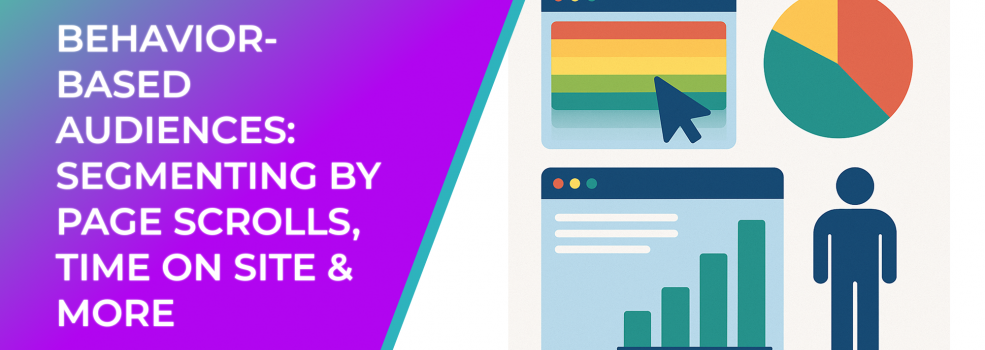What Are Behavior-Based Audiences?
Behavior-based audiences are groups of users segmented based on specific on-site actions. These include:
-
Page scroll depth: How far users scroll on a webpage.
-
Time spent on site or specific pages.
-
Number of page views per session.
-
Engagement with particular elements (e.g., clicking buttons or videos).
-
Exit intent or bounce patterns.
These behaviors give valuable insight into user intent and interest levels.
Why Behavior Matters in Ad Targeting
According to a 2023 study by HubSpot, users who spend more than 90 seconds on a website are 2.5x more likely to convert than those who spend less than 30 seconds. Similarly, a visitor who scrolls past 75% of a product page is significantly more likely to be sales-ready.
Behavioral data helps you:
-
Prioritize warm leads.
-
Exclude low-intent visitors.
-
Build precise Facebook custom audiences.
-
Improve ad relevance and ROI.
Segmenting by Page Scroll Depth
Scroll-depth heatmap illustrating where most users stop scrolling—ideal for identifying high-intent engagement zones
Scroll tracking allows you to identify users most engaged with your content. For example:
-
Users who scroll more than 75% of a blog post could be added to a retargeting audience for related offers.
-
Visitors who bounce before 25% could be excluded from campaigns.
Scroll depth data, especially when layered with time-on-site, sharpens your audience targeting strategy.
Time on Site: A Key Engagement Metric
Typical average session duration—around 3 minutes 44 seconds—highlighting how much time engaged visitors spend on site
Not all visitors are equal. Someone who spends 3 minutes on a page has clearly shown more interest than someone who exits after 10 seconds.
This layered approach enables smart Facebook retargeting strategies that focus on engaged traffic.
Other On-Site Behaviors Worth Tracking
In addition to scroll and time, consider building segments based on:
-
Page views: Users who visit more than 3 pages are often deeper in the funnel.
-
Button clicks: Add to cart, sign-up, or play video actions show intent.
-
Form interactions: Even incomplete submissions indicate interest.
These segments can become high-performing Facebook custom audiences or even seed lookalike audiences for top-of-funnel targeting.
Final Thoughts
Behavioral segmentation is no longer optional for competitive Facebook advertising. By tracking and segmenting based on how users interact with your site, you can:
-
Improve targeting precision.
-
Enhance ad performance.
-
Drive better ROI.
Want to take your Facebook ad targeting to the next level? Learn more in our deep dive on A Brief Excursion into the Facebook Ad Types and see how behavior data can redefine your audience strategy.

